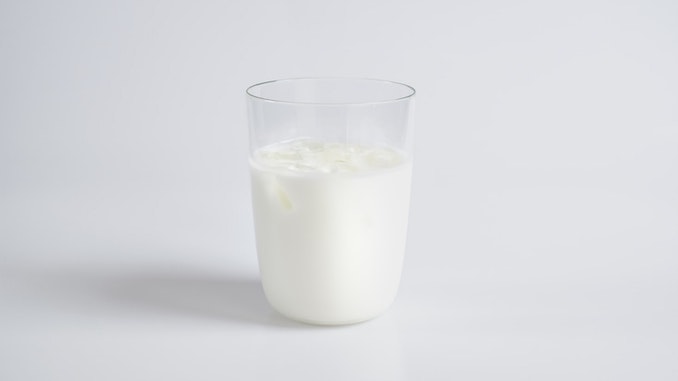
What is the process behind this popular coffee competition technique?
BY TANYA NANETTI
SPECIAL TO BARISTA MAGAZINE ONLINE
Cover photo by an_vision for Unsplash
In the several last years I have followed the development of freeze distilled milk in the World Barista Championship. After Ben Put first used it in 2017, many others did the same, the latest being U.K. Barista Champ Paul Ross at this year’s WBC competition.
When I asked Paul to explain to me how freeze distillation improves milk, and if he could see, one day, the freezing distillation as something possible even in an everyday coffee shop, his answer left me with even more questions.
“To improve is an interesting word,” he said, “as I think to intensify is probably more apt.” He explains how freeze distilled milk aims to lower the amount of water present in milk. Simultaneously, it increases the tasting experience and intensity of ingredients in all its other aspects. Whether or not this is a positive thing for milk is debatable, but he also notes that milk blends are not a new thing in coffee culture.
“I can only talk from my experience in the U.K., where we generally have whole/semi/skimmed milk, and each has an effect on flavor and drinking experience—although typically most specialty-coffee shops would use whole milk,” he explains.
There has also been some scientific research completed on the topic. One specific example includes CoffeeMind’s Morten Münchow around his research on milk in the context of coffee.
World Barista Championships are often an insight and a showcase of trending thoughts in the coffee industry; even if freeze distilled milk might not be the next popular ingredient in coffee shops, it certainly piques one’s curiosity, since a lot of competing baristas have scored well by using it. As a barista myself who has experimented with freeze distilled milk, I personally think we’ll see a continued exploration of the boundaries of milk in coffee.

What Is Freeze Distilled Milk?
Also known as fractional freezing, freeze distilled milk is a pretty straightforward process. Grab a jug of whole milk, knowing that half of the water content in it will lower the overall volume. Freeze it, and then when it’s perfectly frozen, flip it upside down on top of a second container, and let it melt. This process must happen in a cold environment to be food safe too.
What Happens to the Milk During This Process?
While the milk thaws, the first liquid that filters is made up of the substances that have a lower melting point than the rest of the water and other contents in the whole milk.
The distilled milk is now mainly composed of sugars, proteins, and fats, and is ready to be used as it is, or mixed with regular milk in case its results are too intense. After using freeze distillation for the first time, barista champ Ben Put suggested mixing it with regular milk at a 1:1 ratio.
What Does Freeze Distilled Milk Taste Like?
The newly distilled milk will be super creamy, with a texture and a sweetness that, when properly steamed, will pair beautifully when poured over a shot of espresso. When steamed (or even just heated up), milk’s complex carbohydrates (sugars) will break down into simpler sugars and what we perceive as especially sweet.
Why Is This Not Café-Friendly?
This process is obviously quite easy to replicate. However, over the years its use has been limited to competition. This is because although it’s an easy process, the time to prepare it is quite long, especially if the thawing part will take up to 30 hours in a fridge to be food-safe. That’s probably the reason why we’ll never see freeze distilled milk commonly used in coffee shops around the world, but for now we can admire and appreciate it as a competition delicacy that can be replicable at home too.
ABOUT THE AUTHOR
Tanya Nanetti (she/her) is a specialty-coffee barista, a traveler, and a dreamer. When she’s not behind the coffee machine (or visiting some hidden corner of the world), she’s busy writing for Coffee Insurrection, a website about specialty coffee that she’s creating along with her boyfriend.

